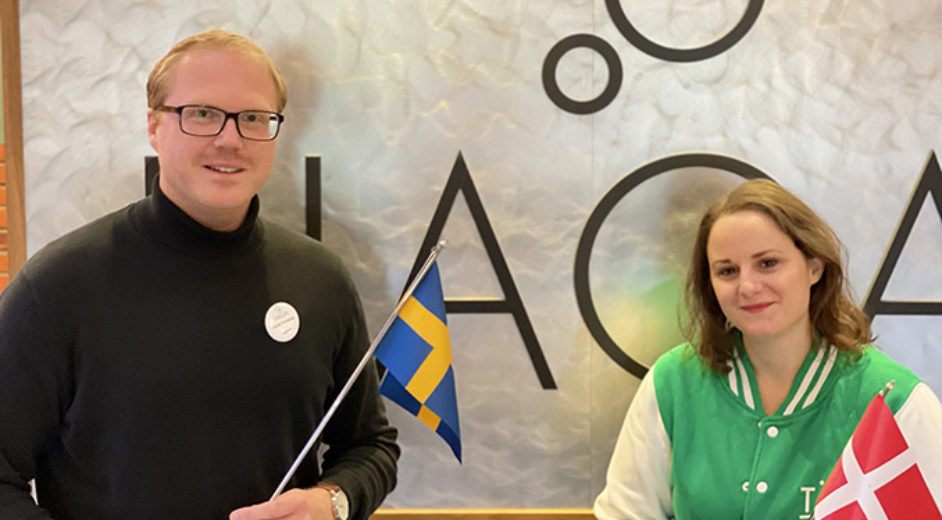Teacher exchange increased interest in Nordic languages
By Kristina Wall at the Swedish Council for Higher Education
Several thousand pupils from three schools in Sweden, Denmark and Iceland have received instruction in Nordic languages from teachers from each other’s schools. All thanks to a teacher exchange that is part of Nordplus Junior!
Haga upper secondary school has worked with this teacher exchange project for almost a decade, thanks to funding from the Nordplus Junior exchange programme. Every year, the school submits a new project application with some adjustments to the format.
Over the past year, three teachers from Haga upper secondary school, two teachers from Odense in Denmark and one from Akureyri in Iceland have spent a week at each other’s schools. The teachers teach in their own language, apart from the Icelandic teacher who speaks Danish – which is studied by many upper secondary school students in Iceland.
“It has been a consistent project,” says Patrik Finnberg, who teaches Swedish and Religion at Haga upper secondary school. “We have adapted the format to our syllabuses – the Danish teachers meet our Year 2 students and teach Nordic Languages. The Icelandic teacher meets students in Year 3 and includes aspects of linguistic history, using examples from Icelandic.”
Increased interest in Nordic languages among the students
The aim of the project has been to increase the teachers’ and the students’ knowledge of Nordic languages. Each class has been taught two lessons by the incoming exchange teachers. At Haga upper secondary school, teaching concludes with the students looking at Nordic languages in more detail and then writing an essay.
“We can see that the exchange makes the students more interested in Nordic languages,” says Patrik Finnberg. “It has been a boost for teaching and the students’ writing is more enthusiastic afterwards.”
Jennica Petré is also a Swedish teacher at the school, and says that the project is entails professional development for the teachers:
“Meeting colleagues from other countries is very valuable. We make sure that as many of our Swedish teachers as possible can travel to Denmark and Iceland. During the week that the teachers are here, we also make sure we go out and eat together and discuss how we can develop the project in the future.”
Culture is an important part of the partnership
When the Swedish teachers teach in Iceland, they speak in Swedish but use a simpler vocabulary than normal. Although many Icelandic students speak Danish, motivation may sometimes drop.
“This project is also part of the Icelandic teacher’s aim of getting students to realise the benefits of studying Danish – they can see that if they know Danish, then they can talk to all of Scandiavia,” says Patrik Finnberg.
“The Nordic countries are unique, in that we can travel to each other’s countries and communicate in our own languages,” says Jennica Petré. “We are fairly similar, and recently there have been television series that have made the students more interested in the cultures of their neighbouring countries. But the major point is that this exchange has increased our goal fulfilment and given us more motivated students, which is great!
Further reading
Committees: Teach you people more about the Nordic region in schools!
